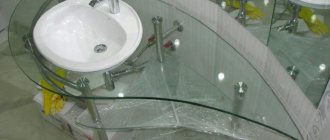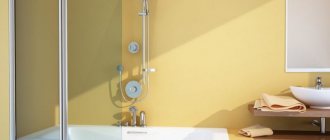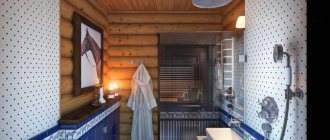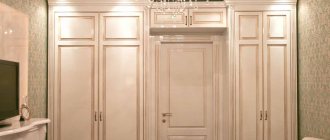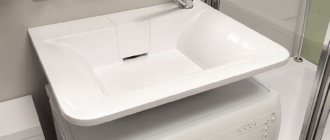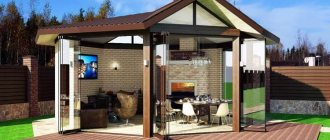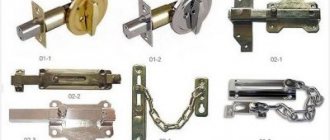The most convenient and reliable modern locking device is a magnetic lock. It is widely used for doors of apartment buildings, workshops and other office premises. This lock allows you to restrict access to certain persons, which is a necessity in many industrial enterprises. The magnetic lock is also wear-resistant and has a long service life. Despite this, failure of even such a durable locking mechanism becomes inevitable over time. In this case, it will be much more profitable not to buy a new lock, but to repair it. The company in Moscow offers repairs of magnetic locks of any complexity at an affordable price.
What should a bathroom be like for disabled people?
The category of people with limited mobility is represented by people who find it difficult to move independently and navigate in space, as well as receive certain services or information support.
- over sixty years of age;
- with temporary disability;
- with a baby stroller;
- pregnant women;
- preschoolers.
Moving inside such a plumbing room and operating the equipment in this case must be carried out without the help of unauthorized persons.
Conventionally, a sanitary room is represented by several functional areas, including an area for placing equipment, an area for moving a stroller, and a place for transferring to specialized equipment.
Watch the video about the door opening side with a specific example
Recently, manufacturers of interior doors have increasingly begun to appear incomprehensible words in communication with clients and in product descriptions. This is especially true for door coverings. The first to appear was the marketing feature “eco-veneer”. It worked so well that many door manufacturers have moved in this direction, producing doors with eco-veneer coating. And some, wanting to stand out, came up with other words that attract buyers. This material contains coverings of interior doors, both real and unknown, and an attempt to find out what is meant by each name.
In Soviet times, all doors were of the same type, especially in design. In the nineties, along with the flow of imported goods pouring into Russia, buyers first saw doors from Finland, which were noticeably different from the interior doors we were familiar with. Since then, doors with a similar design and configuration have long been produced in Russia, and the term “Finnish doors” began to denote not the place of production of the door, but its design feature. So what is the peculiarity of the structure of Finnish doors?
We often hear the question from customers: “Are these doors veneered or MDF?” or “How do interior doors made of MDF differ from doors made of eco-veneer?” The problem is that the characteristics of doors from completely different categories of product properties are compared. Buyers often confuse the name of the door covering with the name of the material from which these doors are made. Let's look at what MDF is, its pros and cons in relation to interior doors.
Room size and layout
The most important requirements that must be presented to the organization of a bathroom for use by persons belonging to groups of people with limited mobility are represented by the size and special layout:
- the internal space and free area of the sanitary room must be sufficient for the smooth movement and use of a stroller or walker, as well as the movement of an accompanying person;
- the stroller's access to the sanitary room must be free, so the installation of high or difficult thresholds is completely excluded;
- Strong handrails must be installed along the entire perimeter of the functional space in the bathroom, which allow persons with limited physical capabilities to sit down and stand up independently, as well as move without assistance;
- The flooring in the bathroom should not be slippery or traumatic, so the finishing is done with special modern materials.
Bathroom door with handrail
Such devices can be presented:
- specialized models of toilets of a special shape or with a special lining;
- bathtub models that go halfway under the floor covering;
- shower cabins or hydroboxes equipped with low trays with a corrugated inner surface or a special anti-slip mat;
- shower cabins without a tray and sides.
Equipped bathroom for disabled people
The sink should be located at a height of no more than 0.8 m from the floor level with a minimum distance from the side wall of a quarter of a meter. The space under the sink remains free for the stroller to enter.
Troubleshooting interior door handles
- If the mechanism jams, operates irregularly, or makes strange sounds, lubrication of the moving elements of the lock can solve the problem. To do this, the locking device is disassembled, cleaned of accumulated dirt and treated with machine oil or a special lubricant for locks;
- If the hilt tongue does not fix the door in the locked position or jams, you need to check whether it fits into the striker on the jamb. Often, due to sagging of the sashes or skewed frames, the tongues of the locking mechanisms no longer fit freely into the holes. In this case, you need to correct the geometry of the door, but in some situations you can move the striker or bore the hole with a file;
- if the handle does not return to its original position, you need to check the return spring. Depending on the circumstances, it must be put in place, tightened if it is loose, or replaced if broken. It is difficult to find a return spring on sale, so you can replace it if you have an old interior handle from where it can be removed. Otherwise, you will have to reinstall the entire locking mechanism;
- If the handle works, but the halyard tongue does not move, the reason is that the square is too short. To fix the problem, a replacement will be required. You should buy a part of the required length and install it in the locking mechanism.
If typical breakdowns cannot be corrected using standard methods, you need to completely disassemble and inspect the locking device. The mechanism must be cleaned of dirt and old grease, and then the identified broken parts must be replaced with new ones. The lock must be lubricated before assembly.
Opening the door
In order to ensure trouble-free access to the bathroom and comfortable use of the room by wheelchair users, the optimal width of the doorway should not be less than 90 cm. Doors in such specialized cubicles, as a rule, open outward.
It is allowed to open the doors inward if the space in such a sanitary room exceeds the minimum permissible dimensions that must be taken into account when arranging a specialized bathroom.
Opening the door lock and removing the mechanism yourself
If the locking device breaks down, the easiest way is to replace the old well with a new one. However, this option is not always relevant, as it is suitable for locks that are equipped with security locks. If necessary, you can dismantle the lock yourself. Let's consider the sequence of actions in this case.
First of all, you need to inspect the locking mechanism. If the lock design has a simple structure, then the locking bolts can be removed. They must be pushed completely into the mechanism. This option is suitable for overhead door locks. After the crossbars are removed, you need to unscrew the fixing bolts. This will allow you to remove the lock from the door.
If the locking device breaks down, the easiest way is to replace the old well with a new one
There are several methods you can use to remove a broken lock. Rough opening of a jammed mechanism involves knocking it out or drilling it out. In order to preserve the structure, you can try to open the mechanism using master keys made by yourself. If you can’t unlock the door yourself, then you need to contact a specialist.
Before starting work, it is recommended to determine the type of locking product. Knowing this information, you can find its diagram on the Internet. Door locks do not break down very often, but it is necessary to think through a plan in advance in case of unforeseen malfunctions.
Marking
Standard formats for traditional tactile markers are represented by D-2.5 cm marking cones arranged in a linear pattern. In the area of the door handle, maintaining a height of one and a half meters, you can install markers made in the form of tactile diagrams for installing sanitary-hygienic equipment.
Door handles for disabled people
Marking with the “Exit” pictogram should be done only by contrast at a standard height of 120-160 cm, which makes it easy to identify the location of the doorway for visually impaired persons and people with cognitive limitations.
Marking with separate tactile indicators or special tactile tiles is allowed, and the material in this case can be stainless steel, polyvinyl chloride or polyurethane.
Door lock repair: the most likely causes of failure
There are a number of specific problems that happen more often than others. Before starting repair work, it is necessary to determine the cause of the malfunction. Therefore, it is recommended to study the list of the most common problems.
Repairing door locks requires an understanding of their operating principle and certain training.
Most often, the breakdown of the door locking mechanism occurs due to jamming of the bolts. As a result, they stop moving. It is immediately worth noting that there are several reasons for the appearance of such a malfunction. Some problems cannot be fixed on your own. In the most critical situation, a complete replacement of the door lock may be necessary. Repair of the mechanism should be carried out taking into account specific instructions.
Quite often, the bolts jam when the door does not slam shut completely. As a result, the distortion affects the tongue that rests on the bar, which is located on the box. To fix this problem, you need to perform a fairly simple manipulation. The counter hole will need to be enlarged. To do this, you can use a regular file.
Difficulty opening or closing the door is also a common problem. You can also fix this problem yourself. In this case, the lock does not function properly due to the presence of a misalignment, and there may also be a problem with the canvas itself, sagging on the hinges. Repairing the door lock in such a situation is not difficult. You just need to eliminate the distortion of the mechanism or canvas.
The cause of lock failure may be the displacement of individual parts of the mechanism or its clogging
There is also another common type of problem in which difficulties arise associated with turning the key in the mechanism. It is worth noting that this problem is most often encountered by people who have a metal entrance door installed. The cause of such a breakdown may be displacement of individual parts of the mechanism or clogging of the lock. To correct the situation, you will need to clean the door lock for a metal door.
Note! Before cleaning, you must disassemble the device.
Please note that the system can jam in both the open and closed positions. This indicates problems with the secret. To repair such a mechanism, you will need to clean the lock and lubricate it with machine oil. If this does not lead to normal operation, then the device is completely replaced.
Color of door blocks for ease of orientation
This marking makes it easier for people who are visually impaired or have cognitive limitations to identify the door opening.
Marking is carried out in accordance with the width of the door opening and the opening distance of the leaf using a color that contrasts with the floor covering.
Identification of a plumbing facility through a tactile-sound effect facilitates operation for blind people and people with cognitive disabilities, and a modern visual-acoustic display system is relevant for the deaf and blind. An additional feature is the use of such devices for the purpose of warning about emergency situations, including evacuation.
What to do if the key gets stuck
First of all, you need to treat the mechanism with silicone spray and carefully, slowly, remove the key. If this method does not help, the key needs to be clamped with pliers and loosened a little. After this, spray some liquid inside again and carefully turn the key again.
Advice:
After spraying the liquid, you should move the wrench a little to maximize the distribution of the lubricant, wait about 20 minutes and only then take out the wrench.
If this is successful, it is necessary to change the cylinder or lock, otherwise the situation may repeat. If there are no problems when the door is open, but when the door is closed the key gets stuck, the door frame must be bored. A grinder, drill or file is suitable for this.
The key is broken in the lock
What to do if the key inside the lock breaks:
- Try to pull it out with pliers if a small piece sticks out.
- Use a jigsaw if the key is far inside. Send the jigsaw blade into the keyhole from below and twist it to engage the key. Try to carefully pull it out along with the rest of the key.
- When you cannot get the key, unscrew the lock and remove it.
What does the bathroom plan look like according to SNiP?
Is bathroom planning standardized?
There is a document in Russia that specifies the minimum sizes, dimensions and locations of plumbers in bathrooms and restrooms - “Sanitary Norms and Rules”
According to SNiP, the dimensions of the bathroom in plan look like this:
In this document you can familiarize yourself with the minimum acceptable dimensions of a bathroom in residential premises:
1) The depth of the toilet in a residential area must be equal to or greater than 1.2 meters.
2) The width of the bathroom should not be less than 80 centimeters.
3) The ceiling height must be at least 2.5 meters.
4) If the toilet is located in the attic, the distance from the sloping roof to the toilet should not be less than 105-110 centimeters.
5) This document also sets out the parameters of the corridor near the bathroom, the ceiling height of which should not be less than 2.1 meters. This rule is very often violated by owners who place mezzanines just above the entrance to the restroom.
6) Doors to the bathroom should open strictly outward. In addition, the entrance to the restroom under no circumstances can be located in the living area or in the kitchen, exclusively in the hallway.
For public premises, there are also minimum acceptable sizes.
If other plumbing fixtures will be placed in the restroom in addition to the toilet, the following location rules must be observed:
1) The toilet and bidet must be located at a distance of 25 centimeters or more from each other (the exception is for models that combine two functions in one item).
2) It is necessary to take into account the free space in front of the bath or shower, equal to 70 centimeters, ideally, of course, 1-1.2 meters.
3) When placing the toilet, you must leave a free space in front of it 60 centimeters wide.
4) On the sides of the toilet it is necessary to provide a free area of 25 centimeters.
5) When hanging a sink from the wall, you need to know that there must be at least 70 centimeters of free space in front of it, and in the case of a model that is recessed into the wall during installation, this parameter increases by another 20 centimeters.
Public buildings must provide toilets for the disabled, which are located according to the following rules:
1) The depth of the cabin should not be less than 1.8 meters.
2) The width of the cabin must be 1.65 meters or more.
Door material and coating
It’s easy to guess that all the main performance qualities depend on what material the interior door to the bathroom is made of. Lots of options:
- solid wood is expensive, beautiful, but at the same time not very practical. The material retains sound and heat well, is environmentally friendly, and durable with proper care. Wood reacts very sensitively to changes in humidity and temperature, so if you take a canvas from solid wood, then choose the most stable species. Exotic breeds are considered the best in this regard, incl. Merab and Balau. But these are elite options - oak and alder are usually used in domestic bathrooms. Other species (ash, beech, pine) require more careful processing and application of a protective coating;
- laminated doors are panels based on MDF, chipboard or inexpensive wood (solid pine), and the top is finished with one of the following materials: laminate is a multi-layer structure that consists of paper with a pattern applied to it and a protective resin coating and varnishes. A high-quality laminate can easily withstand humidity of about 60% and is not particularly afraid of mechanical damage. Some manufacturers use laminate - the same laminate, but with thicker paper and several protective layers of varnish. The economy segment features doors with a thin protective coating that is easily damaged, giving moisture the opportunity to get to the sensitive internal material. Such products are not suitable for the bathroom, so it is better not to save;
- veneer is a thin cut of natural wood, this is where all the pros and cons come from. This is a beautiful finish with a unique wood grain, but it is susceptible to moisture. It can be used in the bathroom only if it is properly coated with enamel or varnish, but it is better to look for another option;
- PVC film must be applied in such a way that there are no joints on the finished canvas. In theory, each part of the door should be covered with film in a special chamber, after which the individual parts are combined into a solid structure. In this case, the risk of moisture getting into the base made of MDF or cheap wood is minimal. Any pattern can be applied to the film, so it is possible to imitate any breed. Beware of cheap products that can release harmful substances and delaminate during use, exposing the base;
- eco-veneer is produced on the basis of wood fibers, which are bonded with plastics. The material can be given not only any color, but also texture, so it is possible to achieve high-quality imitation of wood. The material is much stronger than ordinary PVC film, does not emit harmful substances, and is not afraid of moisture, so it is ideal for bathrooms. Moreover, eco-veneer is very thin and flexible, so it bends well around all the elements of the door leaf;
Of course, you must immediately choose a door that is protected from moisture. If you take the first fabric you come across with the expectation of applying a protective layer yourself, you can ruin the product. A prime example is applying one type of varnish over the varnish used by the manufacturer. If you do not guess the composition correctly, the production layer of varnish may dissolve, i.e. You need to know the manufacturing technology in detail. If you want to further protect the door, then it is much safer to cover only the insertion points of handles, hinges, as well as the upper and lower ends of the door.
Left and first doors
There are 4 installation options according to the opening method. Moreover, in different countries they have different names. For example, the right and left doors in Russia and Europe are defined differently.
In Europe, the position of the handle on the door leaf is determined by the side opening away from you, and in Russia - towards you. Accordingly, for a Russian, the left door is a door with the handle on the left, and the right door is with the handle on the right. In Europe, the opposite is true, which should be taken into account when ordering products in an online store, for example.
Door opening options
To avoid this kind of confusion, manufacturers often make models with a universal hinge arrangement, which allows you to install the sash in a way that is convenient for the user. However, this is not always possible: for example, where the front door swings open should be determined in advance.
The direction of opening of the sash is the second question that should be clarified. The rules here are much stricter. In which direction the door should open is regulated by SNiP and fire safety rules. And the latter argue that any escape doors or those capable of performing this function must open outward. This prevents the possibility of blocking the sash during fires or destruction of the building.
How to make the right choice
Some consumers cannot decide whether they want to buy a finished product or purchase material for self-production. If a person is not an expert in the construction field, then it is better to opt for a ready-made door complete with frame. This will greatly facilitate the installation process. Moreover, when visiting construction sites and stores, the buyer does not fully know which doors are better, so it is worth considering the main criteria for choosing a door leaf for a bathtub and toilet:
The door must be made of quality material
The names of different woods will not tell the common man anything, so it is worth focusing your attention on individual parameters
It is important that the material is water-repellent and does not absorb liquids
The bathroom door should not allow odors to pass through and it is advisable that its design be solid. It is unlikely that any household will like glass built into the toilet linen, even if it does not completely illuminate the room.
A prerequisite: the presence of a lock that will allow it to be locked from the inside. It, of course, can be installed separately later, but the built-in lock will be more reliable and look more presentable. The lock should be neat, not massive. It is needed not for safety, but so that the person in the room feels comfortable and is not afraid that someone will come in.
You need to decide on the material from which the canvas is made and the type of its opening: hinged or sliding. If the apartment is small, then the second option will be more appropriate.
Doors should not interfere with the aesthetics of the entire room, and if we are talking about the structure for the bathtub and toilet, then it should be simple and inconspicuous. The most common manufacturing material: wood; plastic; metal; glass. It is better to choose from the first two points. The metal structure is too massive, and the glass one costs twice as much. It is better to purchase the product assembled so that all the accessories are provided immediately from the manufacturer. Then there is a guarantee that the fasteners will fit exactly during installation.
Public and private buildings
Compliance with SNiP standards and the requirements of the Ministry of Emergency Situations in public buildings, multi-storey buildings, and industrial buildings is monitored by the relevant services. Here, ignoring the rules is excluded, otherwise the violator faces a considerable fine.
- For fire safety reasons, doors always open outward. This is especially true for administrative non-residential buildings. This option is safe, but in which direction exactly the sash turns is determined by other parameters - from convenience to distance to architectural elements or furniture.
- According to the rules, interior doors also swing only outwards, especially if there are a large number of people in the room - more than 15 people. However, there are exceptions: if the door leaf separates the room from a large hall where a large number of people accumulate, there is a queue. In this case, there is a high risk of injury when the sash is suddenly opened outward. However, such a provision should be agreed with the relevant authorities. The photo shows the installation of an interior unit in the office.
The position of the sash and the opening side in a private house are not regulated. Common sense dictates that safety rules should not be neglected, so the entrance block almost always swings outward. But opening interior models or doors to the toilet or bathroom is determined only by convenience.
By the way, SNiP rules are also not mandatory for apartments.
Is a ventilation grill necessary?
If there is insufficient ventilation in the bathroom, this becomes evident immediately after each shower. Condensation appears on the walls, fogging up the mirror and doors. This phenomenon is due to the temperature difference between the door leaf and the air in the bathroom. To eliminate this phenomenon, doors should be equipped with ventilation grilles. It is important to understand that such a solution will only be relevant if the natural ventilation in the room does not cope with its functions.
Interior door position
There are several quite effective recommendations that allow you to determine the optimal solution.
- The door leading from the smaller room to the larger one swings outward. This is especially true for the toilet and bathroom, where there is already little space. But it is advisable to make the entrance to the nursery inside, since if a child accidentally closes the lock, it is much easier to break the door if it opens inward.
- If it turns out that the doors to 2 rooms - a toilet and a bathroom, for example, are nearby, their opening must be organized in such a way that they do not interfere with each other. That is, the option when both doors swing outward is excluded.
Safety
When thinking about the appropriate movement of the door, there is something important to take into account. The bathroom is a rather dangerous place, where it is possible to lose consciousness or have an accident, including due to temperature changes. If a similar situation occurs and the person inside becomes ill, then it is much easier to break open a door moving outward, and this will help save valuable time in an emergency. And it cannot be blocked from the inside, including by the body of the fallen person.
For safety reasons, it is recommended that the door moves outward. So that if a fire occurs, it is possible to escape without additional damage. If the door in the bathroom opens inwards, the flow of air will, on the contrary, ignite the fire more strongly, this will greatly increase the level of danger. If there was a fire outside, the air flow would be directed towards you; in any situation it is safer when the doors to the bathroom and toilet are opened, correctly, outwards.
SanPin requirements and standards for public toilets
, being a manufacturer of toilet partitions and cubicles, offers customers a useful information article about SanPin requirements and standards for public toilets.
State SanPin requirements for public toilets, toilet sizes according to SanPin, established rules for the construction of restrooms are enshrined in regulatory documents. Their implementation is mandatory for everyone.
If the SanPin requirements for toilets in schools and preschool educational institutions were changed relatively recently, in 2010, by Resolution No. 91 of the Chief Sanitary Doctor, then the SanPin requirements for public places have practically not been edited since the 70-80s. However, they are still valid.
In what cases is it necessary to repair a magnetic lock?
The magnetic design is a reliable thing, but it also has its own nuances. Perhaps due to incorrect installation of individual elements or some other factors, the magnetic structure began to malfunction. What should you pay attention to when renovating?
- Deformation of fastening;
- Loosening of the mounting angle;
- Incorrect fixation of the plate;
- Incorrect magnet installation;
- The lack of attraction;
- Door deformation.
These are the most common cases in which magnetic locks are repaired. In cases of deformation of parts, as well as improper fastening, they should be replaced. But if the lock has lost its attractive property, then it is better to measure the holding force of the door. For interior doors, the force of attraction is up to 100 kg.
SanPin for public toilets
The sanitary rules for the design and maintenance of public latrines and their equipment are set out in detail in document SanPin No. 983-72 of 1972.
For places with large pedestrian traffic and large flows of people, an approximate calculation of the capacity of restrooms is 1 toilet or 2 urinals per 500 people. The service radius is about 500-700 meters. SanPin of public restrooms requires that places and approaches to them be marked with appropriate signs and indicators. The location must be agreed with the sanitary authorities.
According to SanPin, the size of the toilet must be at least 2.75 m2. At least 2.5 m2 must be allocated for each toilet, and the height of the partition between the stalls must be at least 1.25 m.
According to SanPin, the toilet room must be fenced, have an entrance vestibule, ventilation, be well heated and lit, must have washbasins, sinks (with a separate airlock) and a separate entrance, and be isolated from the staircases. The floor is made of easily washable materials, non-slippery, the walls are sound/waterproof. Toilet stalls should always have toilet paper, a coat hook, and waste bins available. An electric dryer or paper towel and soap should always be in a public restroom. The public toilet provides cabins with plumbing equipment for children and the disabled. The area around a public toilet should be paved and landscaped. The staff is provided with all the necessary work equipment to maintain cleanliness and order.
What is attractive about installing magnetic locks?
Among the positive properties, consumers highlight:
- Quiet operation - when opening the door there is no sound from the clicking tongue that is contained in a conventional lock. This lock is convenient to install in a house where there are children. During sleep, no one will be woken up by an opening door.
- Easy to install. When purchasing such a lock, you can install it yourself.
- No trauma. Even small researchers will not be able to create anything with a magnetic device. It does not have any protruding parts, such as a retractable tab that you can move and place your finger into the recess.
- Durability. The magnets do not rust or jam, as is usually the case with mortise locks.
As for the negative aspects:
- The magnetic lock only secures the door, but does not lock it. This means you won’t be able to “lock” the door.
- Price. Magnetic locks are much more expensive than mortise locks with a tongue. But silence and reliability cost more.
SanPin for school toilets
Toilets in schools also have their own SanPin standards, which prescribe the following.
On each floor of any school there should be 1 toilet for girls and 1 toilet for boys, equipped with lockable toilet cubicles for children, at the rate of 1 toilet + 1 washbasin for 30 girls and 1 toilet (urinal) + 1 washbasin for 30 boys (0.1 m2 per student).
Sanitary equipment must be intact, without chips or damage. Hygiene room with an area of at least 3 m2 with a bidet or special equipment. tray with hot / cold water at the rate of 1 cabin for 70 people.
In primary school classrooms, laboratory rooms, labor rooms, chemistry, physics, and biology classrooms, washbasins must be installed. Each class has its own size from the floor to the side of the sink. Pedal buckets, toilet soap, paper and towels must be available at all times.
Toilet in a preschool educational institution according to SanPin
For school groups, the toilet area must be at least 16 m2, for preschool and nursery groups - at least 12 m2. The entire area is divided into 2 zones: washroom and sanitary, at the rate of 1 sink/toilet for 5 children. Toilet bowls are installed in the sanitary area, and a shower tray is installed in the washbasin, which has access from 3 sides. In the nursery group, 1 service sink for staff is required with a rack for storing pots with a place for their further processing.
SanPin standards for toilets in enterprises, SanPin for toilets in sanatorium rooms.
Here are basically the same requirements as the Sanitary Regulations of public toilets in general. There are separate regulations for enterprises operating in the catering industry.
All latrine designs are checked by regulatory authorities for compliance with established requirements.
Sanitary standards and rules for toilet facilities in public restrooms establish the following parameters for the overall dimensions of public toilet stalls:
Schools and children's school institutions
For preschool institutions (kindergarten, nursery)
Warp door frame
If the door does not close completely, and defects are not visible to the naked eye, then we can assume that the door frame is skewed. This is a fairly common reason that can arise both during installation and during operation. This deformation may be due to the following circumstances :
- error when installing the box;
- the effect of moisture on the wood of the box;
- subsidence of the frame under the influence of an overly heavy door leaf for which it was not designed;
- natural aging of the material during prolonged use.
As a rule, distortion occurs in the places where the box is attached. Repair can have 2 directions: dismantling and reinstalling the entire structure or additional strengthening of the box. To select a repair method, it is necessary to determine the location of the distortion and the degree of deformation.
Strengthening the door frame is carried out in the following order:
- The casing and door leaf are removed . The integrity of the box is checked. Using a plumb line and level, the presence and location of distortion is determined.
- Fastening elements are strengthened . As a rule, fastening is carried out with anchor bolts, and, most often, the stand on which the hinges are mounted is checked.
- The cracks are sealed with polyurethane foam . Sometimes wooden or plastic wedges are placed in the gaps to level the posts. The evenness of all racks is checked by level and plumb.
Important ! Misalignment can occur due to the corner connection of the box itself. In this case, you will have to dismantle it and try to restore the perfect right angle. After repair, the entire structure is returned to its place.
Design space
There is no absolute truth in this matter. The optimal solution will be one based on an understanding of all the nuances in each specific case.
When installing a swing door, there are four options for installing it on the opening side. How to choose the right one from four options so that it is convenient to open and close doors, turn on and off the lights, go in and out of a room? What regulations and safety requirements are there regarding this?
First you need to figure out which door is called “right” and which is called “left”. And it's not that simple. The fact is that in many European countries the opening side is determined when the door is positioned “away from you”, while in Russia it is determined from the opening side “towards you”. Hence the difference: Russians consider doors with a handle on the right to be “left”, and those with a handle to the left – “right”. But in Europe it's the other way around. In Russia, if you open a door with your right hand, it is usually considered “right”. And if you need to use your left hand to open it, then such a door is considered “left-handed”.
In order to avoid confusion and difficulties in selection, many manufacturers prefer to install universal hinges on their products, although this option is not entirely convenient. Universal hinges, as a rule, are one-piece, and in order to remove the blade it is necessary to completely dismantle the hinges.
There is another way out - when going to a door salon, have a floor plan with you indicating the location of the doors. Experienced consultants themselves will determine the desired side of the door swing and tell you which hinges are best to use for installation.
Before you buy interior doors, you need to know not only the exact dimensions of the doorways, but also where these doors will open. The direction of opening the doors must be determined at the design project stage, since the location of the furniture and switches in the room will largely depend on which direction the doors will open.
How to fix an interior lock
Door handles, latches and simple cylinder mechanisms can be restored without the help of professionals. Lever mechanisms are complex and require practical skills and experience working with locking devices, so it is better to immediately call a specialist to repair them.
The most common situations when interior locks need repair:
- mechanism jamming. Pressing the handle, activating the latch, or freely moving the tongue is difficult. Opening doors requires greater effort or additional steps. Often the malfunction is accompanied by uncharacteristic sounds when the mechanism operates;
- The door handle does not return to its original position after opening the door. The problem may manifest itself individually only for the handle or in combination with jamming of the latch;
- irregular operation. The movement of the device's bolts is difficult; the bolt does not fit into the counterpart located on the jamb. When you press the handle, the halyard tongue sinks or does not hide;
- loosening of locks. The structure moves away from the door, sags, and wobbles when the handle is pressed. To eliminate the problem, tighten all fasteners and, if necessary, replace them with new ones. In this case, dismantling and disassembling the locking device will not be necessary.
First of all, you need to determine whether the lock is causing the problem. In some cases, incorrect operation of the locking device is caused by distortion or sagging of the doors, violations of the geometry of the door frames, and changes in the shape of the leaves due to high humidity.
If the problem is in the locking mechanism, it must first be removed and disassembled to diagnose the problem. Based on the information received, a decision is made on the feasibility of repairs and further actions.
Rule 1: Doors should open from a smaller room to a larger one.
For example, opening a bathroom or dressing room outward rather than inward will not take up additional space in an already small room. In addition, opening bathroom doors from the outside makes the bathroom safer in case someone falls ill and falls on the floor, blocking the doors.
It is more correct to open the doors to the children's room inwards. If a child locks himself in a room and at this time a situation arises in which you need to urgently provide assistance to the child, then it will be much easier to break open the doors if they open into the children's room.
Veneer
Doors lined with veneer are a product covered with a thin layer of wood; inside they are made of a different material.
Veneer, as a cladding, is quite suitable in quality for bathrooms; it is resistant to:
- Mechanical damage;
- moisture;
- Temperature influences.
This is mainly due to the coating of several layers of varnish.
Manufacturing technology makes it possible to significantly lighten the door leaf. The appearance of the finished product is almost no different from the massive version, either in color or texture. Most often the basis of the material is the following types of wood:
- Oak;
- Nut;
- Beech.
In addition to natural veneer, eco-veneer can be used.
Rule 2: The door should swing open to most of the room.
When we enter a room, we should immediately see everything that is in it at the entrance. This is possible in cases where the entrance is located in one of the corners of the room, and not in the middle of the wall. In this case, the door opens towards the nearest wall.
If the entrance to the room is in the middle of one of the walls, then the opening should be towards the switch. This means that when we come in or out, we open the doors with one hand and turn the lights off or on with the other. If the switch has yet to be installed, then it is more correct to open it towards the window so that when entering the room, the first thing we see is the window, the light from which would fall into the corridor.
Functionality
But in general, there are positive and negative arguments regarding which way the bathroom door opens. Without taking into account safety advice (this happens quite rarely), you should decide based on convenience and aesthetics. It should not only be practical, but, first of all, not irritate in appearance, and be beautiful.
For many, it is the aesthetic side that is really important: how everything will look when opened in one direction or another, and from which side the hinges will look better. This may seem funny, but the entire interior surrounding the door largely depends on it.
The solution to the problem: where to open the door in the bathroom depends on what you want to load it with. Hooks for towels and bathrobes, and less often mirrors, are often hung on it. It is necessary to think about where the door to the bathroom should open so as not to break or damage the decorative details.
Rule 3: Adjacent doors should not touch each other when opened simultaneously.
If the doors are very close and touch each other even when installed to the far edges of the opening, then you will have to install one of the doors with the opening to another room, or move the doorway. Doors touching each other when opening can not only damage themselves, but can also hit someone leaving the room. But the most important thing is to prevent one door from blocking another.
In small rooms such as closets, a door opening inward will minimize the usable area of the room. Doors from rooms to the corridor should open into the room, since a door opening into the corridor will make it difficult to move along the corridor and may exclude the possibility of moving large pieces of furniture in and out of the room.
The basic rule for installing interior doors is: they should open in the direction where there is more space. Most often, with a standard layout, this rule implies that interior doors should open towards the room. But on the staircase the situation is the opposite. That is, it should go out, not in. This requirement is dictated by security considerations. Outsiders will not be able to break into it with simple physical effort, that is, such a door cannot be knocked down. However, if when you open your front door it takes up a significant amount of space in the stairwell and makes it difficult to move through, it may make more sense to have it open in the opposite direction.
Accessories
If for a living space it is not at all necessary to install a lock and handle on the interior door, then for a bathroom this is a necessary requirement. There are several types of locks that can be selected, taking into account the material of the door and the personal taste of the owner:
- Built-in lock - this solution will be the most economical in terms of configuration and installation price. This is an ordinary handle with a latch inside.
- Self-fixing. Here you need to separately buy and install a handle, and install a latch separately. It can be in the form of a latch or mortise. Such fittings are the simplest and most reliable.
- Mortise lock with tongue. This product secures the door leaf in a closed position. You can lock yourself inside a bathroom or toilet by securing the lock with a latch built into the mechanism itself.
SNIP STANDARDS
According to the building codes and regulations (SNiP) “Fire safety of buildings and structures” dated January 21, 1997, doors at emergency exits and on evacuation routes must open towards the exit from the building. In all other cases, the direction for opening is not regulated, since there are no standards. Below is a list of them:
- apartment buildings;
- private houses;
- premises in which no more than 15 people can be present at the same time;
- storage rooms with an area of no more than 200 m²;
- bathrooms;
- external walls of buildings located on the northern side of the climate zone.
However, there is still a general recommendation. Whatever direction the interior door opens, its location should not interfere with the evacuation of people in case of an emergency.
Also, the SNiP document dated January 21, 1997 states that at the design stage of a building it is necessary to position the doors in such a way that when they open simultaneously, they should not block each other. That is why there are situations when in the same room the doors, although they open in one direction, but from different hands.
Original ways to solve the issue
The door does not have to move in one direction or another; there are many options. Abroad, they especially like to use original methods of opening doors to the restroom. It is acceptable to use a door with a sliding mechanism; it certainly will not interfere or reduce the area of the space; its peculiarity is that it slides along the chassis along the wall or into the wall. This is also a minus: if you make the chassis on the outside of the wall, you won’t be able to put furniture or hang a picture there.
You can also use double hinged or sliding doors; they will take up much less space and, accordingly, cause much less inconvenience. In addition, they can move in both directions.
It’s far from an ideal version for a bathroom or restroom, but the number of advantages speaks for the opposite. The accordion door takes up virtually no space, no matter what condition it is in. It opens easily and makes the interior very unusual. There will be no unnecessary difficulties in terms of furnishing with it, since opening and installation does not require space either inside, outside, or along the wall.
Why is it better to contact us?
- The technicians working for us are professionals, they know how to fix complex breakdowns, and for whom there are no insurmountable tasks.
- We will respond quickly to your call because we know how important time is to you, especially if every second counts.
- We have a set of necessary tools, locks, etc.
- You will receive a full guarantee of up to 3 years for the work performed, which is documented.
- The prices will please you. When placing an order, the visit of the master is free, the price only includes the work and the price of the materials used.
Service areas in the Moscow region:
|
|
SHOW MORE
Reviews from users of magnetic locks
Sergey: “During the renovation, a team of installers installed the doors (we purchased them separately, like a panel). At our request, magnetic locks were installed in the doors. They cost us 500 rubles more than usual. They work really silently. Only the door doesn’t lock, but that’s what we need.”
Read also: How many people can you fit into a car’s title?
Julia: “Now you can leave the baby’s room with peace of mind, the door doesn’t rattle. Previously, our latch could wake up the child. And what’s good is that the door opens both forward and backward! We are glad".
Valeria: “My husband installed the locks, he didn’t figure it out the first time, but then everything went as it should. Now the door in the kitchen opens with light pressure from the elbow (when your hands are busy).”
Sergey: “I installed the magnetic lock in an hour, but only the second time. I had to use the instructions. In fact, there is nothing complicated. The second door yielded better.”
Operating principle of a magnetic lock
The operation of magnetic locking mechanisms is based on their ability to attract certain types of metals. To hold the door closed, a magnet is placed in a movable element of the lock body, and a counter metal strip is placed on the frame, or vice versa.
Devices that supply electric current to a magnet winding can withstand the greatest load. Such a lock is opened with an electronic key (chip, proxy card) or by pressing a button, while in conventional latches the magnet is moved away by turning the door handle.
Replacement and repair process
Repair and restoration work began with diagnostics of the cable line. After all, if this is not done when connecting devices, you will have to look for why it does not start. Therefore, we measured the incoming voltage and the presence of a signal on the wires.
The second stage was to dismantle the anchor; the master decided to leave it because of the large area.
Dismantled the anchor to change and add a few “know-how” elements, and then screwed it back on
A rubber gasket was installed under the anchor; it is this that will allow the anchor and the electromagnetic lock to move in the same direction and no amount of effort will open the lock from the outside. Also, such an upgrade will not loosen or break the strength and mechanisms. To prevent the corners of the armature from running diagonally parallel to the electromagnetic lock, two screws were drilled in the corners and two self-tapping screws were installed.
The anchor is well and firmly secured. Let's move on to the next stage.
We apply and measure the installation location of the mounting plate and electromagnetic lock. Prepare the surface and level it with a hammer. We drill the necessary holes for installing the mounting plate and install it. We try it on as often as possible so that there are no distortions. Place washers if necessary.
We screw a corner to the electromagnetic lock, measure everything and screw it onto the metal gate door
We screw the plate to the door, check the gaps and adjust the position of the electromagnetic lock so that it lies flat against the armature. The mounting plate has clearances for adjustment. The installation of the electromagnetic lock is complete.
The electromagnetic lock is installed, the gaps are measured, there are no distortions
After installing the lock on the metal gate door, we begin restoring the cable line. We check the joints and seal them, if necessary (with a corrugated sleeve or electrical tape). We connect the broken wires, change them if you don’t like the appearance or there are too many twists to the device. We check the operation of the controller.
We check the operation of the lock. If everything is done correctly, everything will work right away. Everything worked right away for us. All that remains is to adjust the closer.
The door closer installed on the gate is not intended for placement on the street. However, nevertheless, he has been working there for more than two years. And all you need to do with it is adjust the pressure in the off-season.
The operating course of the closer was set: the first 2/3 of the stroke closes quickly, the remaining 1/3 of the stroke closes smoothly.
The renovation work has been completed. We checked the closure of the gate and the operation of the entire system as a whole several more times. The customer was satisfied with the work and thanked us.
In terms of costs, repair and restoration work on the metal door along with the lock itself cost the customer around 2,500 rubles.
How to open a jammed door mechanism?
In order not to find yourself in a sticky situation when there is no way to get into the room and you need to urgently decide what to do, you need to choose high-quality locks and door handles . Usually the difference between low-quality fittings and normal ones is not that great. If the mechanism fails, especially at the wrong moment, the main thing is not to panic, not to try to knock down the door, but to determine the cause of the blockage and try to eliminate it.
To do this, use a Phillips screwdriver to unscrew the fasteners holding the lock cover and try to turn the jammed mechanism. If the actions are unsuccessful, they try to open it with one of the objects at hand.
Suitable for this:
- a plastic card;
- a nail file, but provided that it is durable;
- knife with a thin blade;
- ruler;
- spoke;
- hairpin;
- paperclip and other similar items.
- To open a lock with a pin, it is broken into two halves: one is placed inside the lock, and the pins are turned with the other. When the pin inserted into the lock turns, the door will open.
- The next method is to remove the door from the hinges if they are in immediate access. It is enough to lift the leaf or unscrew the screws holding the hinges on the door frame.
- The third way is to disassemble the locking mechanism by unscrewing all the screws, knocking out the cylinder or drilling it out with a screwdriver.
The most extreme ways to open the door:
- knocking out - for safety, place a towel under the shoulder;
- cutting down the latch if there is a gap between the canvas and the box;
- removing loops with a hacksaw;
- breaking with a crowbar by pressing on the canvas until it opens;
- removing the trim from the striker side, then removing the metal trim.
Purchasing spare parts
The second part of the repair is purchasing spare parts. Since the repair was urgent and the gate needed to be restored before Sunday, and it was already Saturday, the equipment was purchased from a local equipment supplier.
An overview of suppliers and installation organizations can be found on the catalog page “Suppliers” and “Installers”.
This electromagnetic lock was purchased from spare parts. As you can see, his anchor plate is too small, so the old plate was left
An electromagnetic lock for 300 kgf was purchased, the approximate price for it is 1300 rubles.
Each specific interior has its own “correct” answer to this question.
Historically correct - out
First, let's figure out where the front door to the apartment should open. Just a few generations ago, most of the population (for example, my grandmother) lived in hut houses, which were covered with snow during snowstorms in winter. Since in such situations the front door could only open inwards, this was the correct way.


